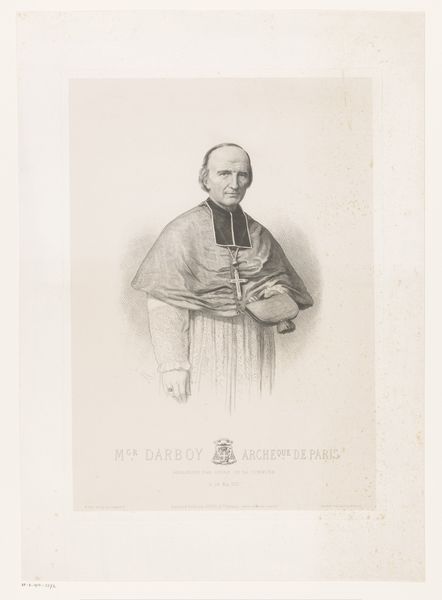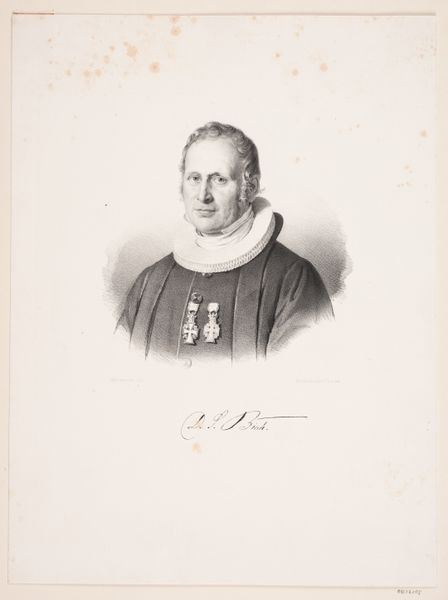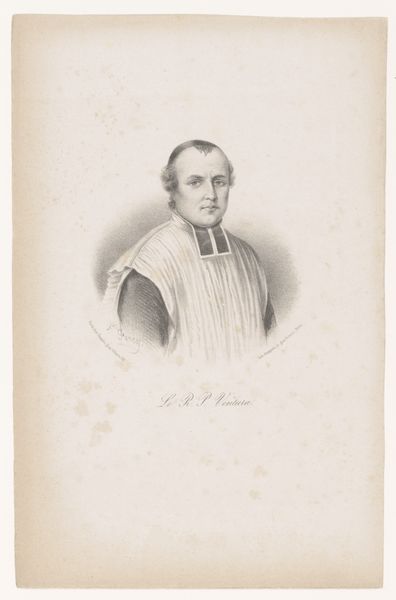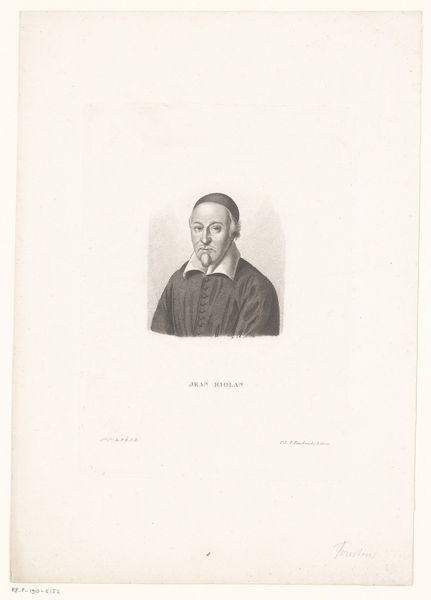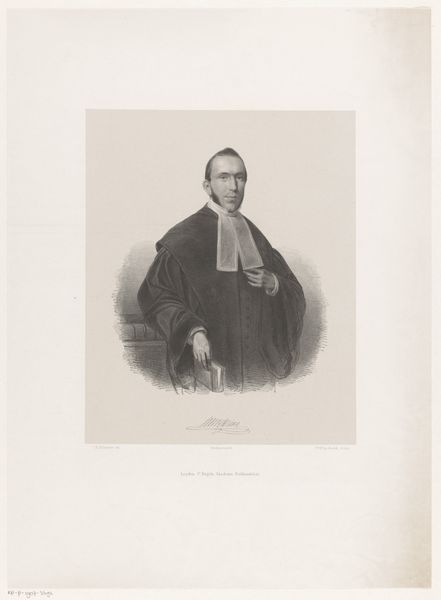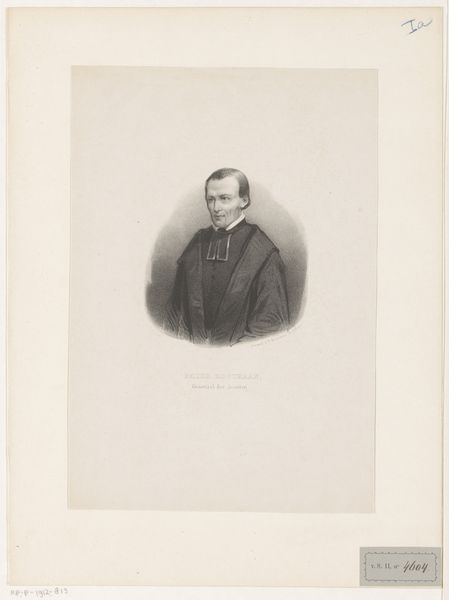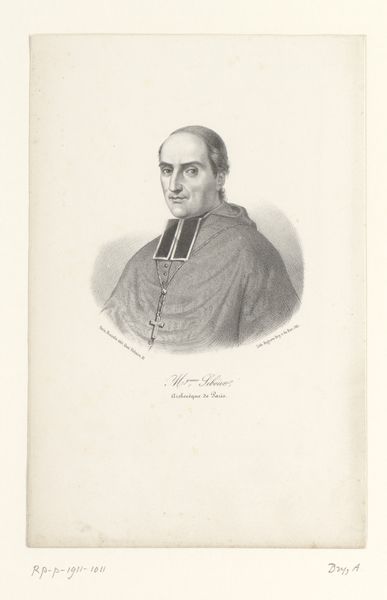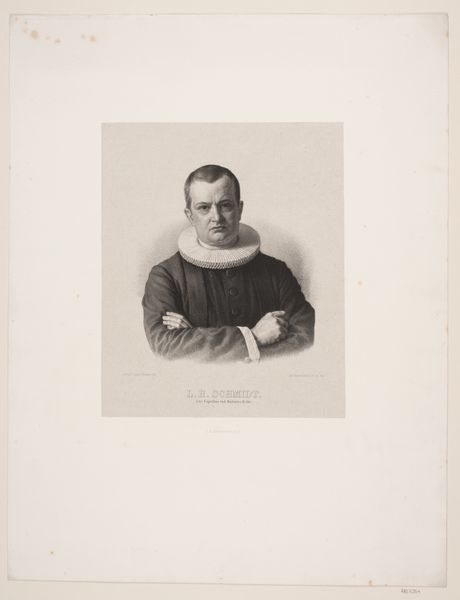
drawing, print, graphite
#
portrait
#
pencil drawn
#
drawing
# print
#
pencil sketch
#
old engraving style
#
pencil drawing
#
graphite
#
realism
Dimensions: height 330 mm, width 253 mm
Copyright: Rijks Museum: Open Domain
Editor: This is "Portret van P. Spangen" by Isaac Wilhelm Tegner, made sometime between 1825 and 1893. It's a drawing, or a print of a drawing, in graphite... it feels like a very official portrait. The high collar makes me think of a particular profession or status. What do you see in this piece? Curator: Well, this print immediately places us in a specific socio-political context. These portraits were often commissioned or created to solidify status, especially for individuals in positions of power, think clergy, academics or prominent merchants. The very act of creating and displaying such a portrait speaks to the subject’s desire for recognition within a certain hierarchy. Who was P. Spangen? Editor: I don't know specifically, but based on that collar and the overall serious tone, maybe someone in the clergy or a scholar? Curator: Precisely. And that’s where the real power of art lies, isn't it? In communicating status and values. The realism suggests honesty and integrity but think about what kind of statement Spangen wanted to put out there and the artist chose to portray! Does this affect how you see the artwork? Editor: Absolutely. Thinking about it as a deliberate construction of an image, designed to project a certain persona, makes me look at it much more critically. I appreciate how it opens a window into the values of that era, too. Curator: Exactly. The public role of this artwork transcends simple representation. It actively participated in the social landscape of its time, making statements about Spangen's status and the values he represented, for the communities that would encounter this type of imagery. Editor: That's given me a lot to consider about the role of art in shaping historical narratives. Thanks!
Comments
No comments
Be the first to comment and join the conversation on the ultimate creative platform.
